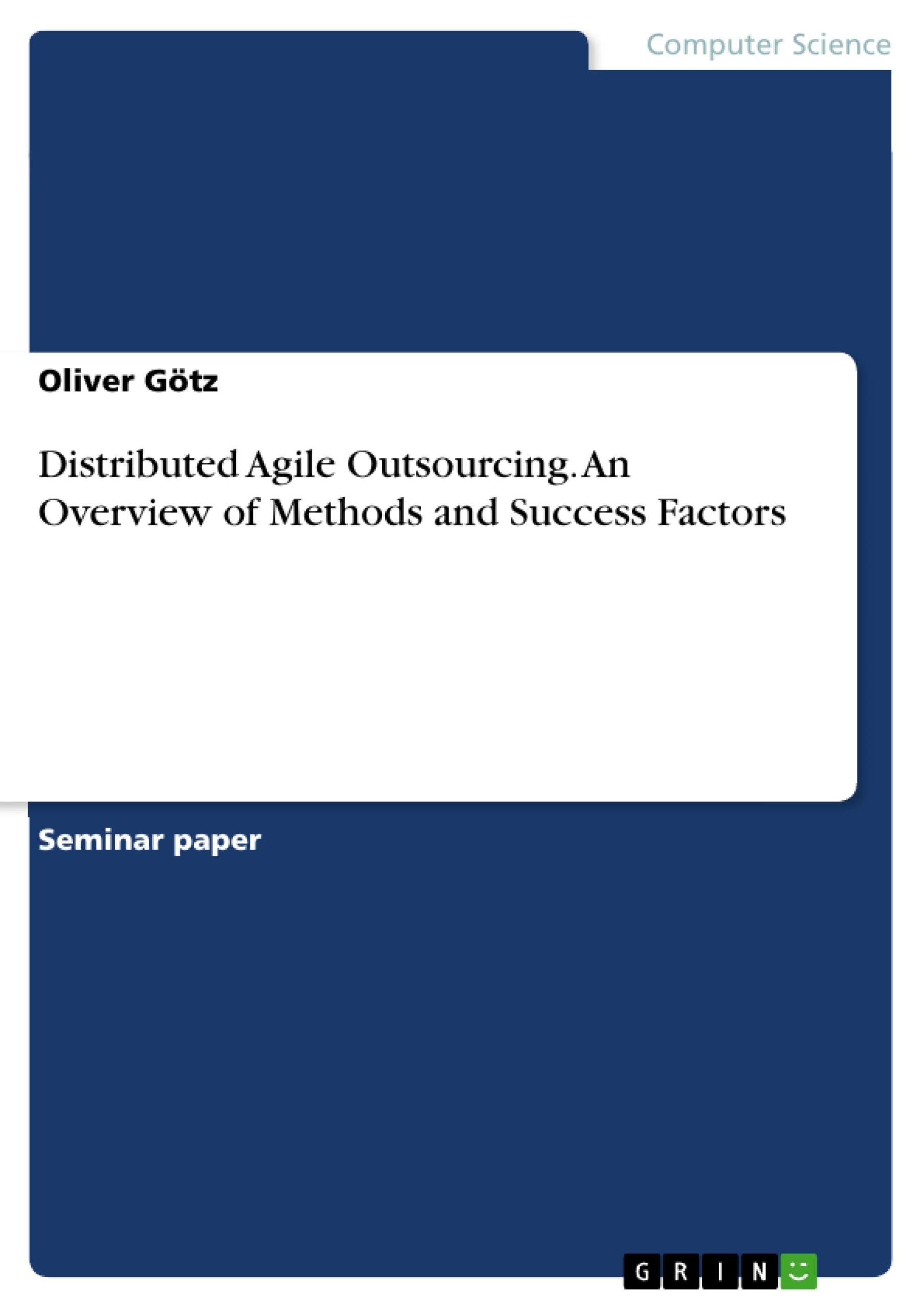IT outsourcing (ITO) engagements have become one of the prevailing IT strategies. Moreover, agile software development (ASD) approaches tend to replace traditional, sequential methods. Injecting ASD into ITO leads to agile global or distributed outsourced development (AGOSD/ADOSD) projects characterized by using agile methods within distributed environments rising the challenge of facilitating coordination and collaboration between teams.
Especially communication between client and external vendor became one of the major critical success factors. Consequently, my study examines communication practices within global IT projects.
(1) I conducted a structured literature review to extend the list of communication practices provided
by prior studies. (2) I consolidated and categorized them. (3) By having performed expert interviews, I deployed a ranking pointing out their practical relevance.
Table of Contents
- Introduction
- Theoretical Background
- Related Work
- AGOSDA symbiosis of ITO and ASD
- Research Method
- Data Collection
- Data Analysis
- Results
- AGOSD communication practices for large IT projects in the literature
- Overview of AGOSD communication practices in large projects
- Practical relevance of dedicated AGOSD communication practices in large projects
- Category 1: Frequent Visits
- Category 2: Multiple Communication Modes
- Category 3: Mirroring / Balances Sites
- Category 4: Ambassador / Rotating Guru
- Category 5: Synchronization of Work Hours
- Discussion
- Summary of Findings and Implications
- Limitation and Future Research
- Conclusion
Objectives and Key Themes
The study aims to analyze communication practices within global IT projects, specifically within the context of "Agile Global Outsourced Software Development" (AGOSD) projects. This involves identifying and categorizing communication practices, evaluating their practical relevance through expert interviews, and exploring the importance of these practices in the context of large IT projects.
- The importance of effective communication in AGOSD projects.
- The role of communication practices in facilitating coordination and collaboration between distributed teams.
- The impact of cultural and geographic differences on communication in AGOSD projects.
- The identification and evaluation of communication practices that contribute to the success of AGOSD projects.
Chapter Summaries
The study commences with an introduction outlining the increasing prevalence of Information Technology Outsourcing (ITO) and the shift toward agile software development (ASD) methods. It emphasizes the significance of AGOSD as a combination of these two trends, highlighting the crucial role of communication in ensuring project success.
The second chapter delves into the theoretical background, reviewing existing research on communication practices in ASD and AGOSD. It explores the framework of supporting practices for global software development, encompassing categories like frequent visits, multiple communication modes, mirroring/balanced sites, ambassador/rotating guru, and synchronization of work hours.
The third chapter outlines the research method employed, including the data collection process and data analysis techniques. This section provides insights into the methodology utilized to gather and analyze information on communication practices within AGOSD projects.
The fourth chapter presents the study's findings, examining the identified communication practices and their practical relevance in large IT projects. This section delves into the practical applications of each category of communication practices, providing a detailed analysis of their significance.
Keywords
The study focuses on communication practices, agile software development (ASD), distributed teams, global IT projects, and agile global outsourced software development (AGOSD). Other important keywords include: information technology outsourcing (ITO), communication strategies, virtual teams, cultural differences, collaboration, and coordination.
- Quote paper
- Oliver Götz (Author), 2017, Distributed Agile Outsourcing. An Overview of Methods and Success Factors, Munich, GRIN Verlag, https://www.grin.com/document/355110




